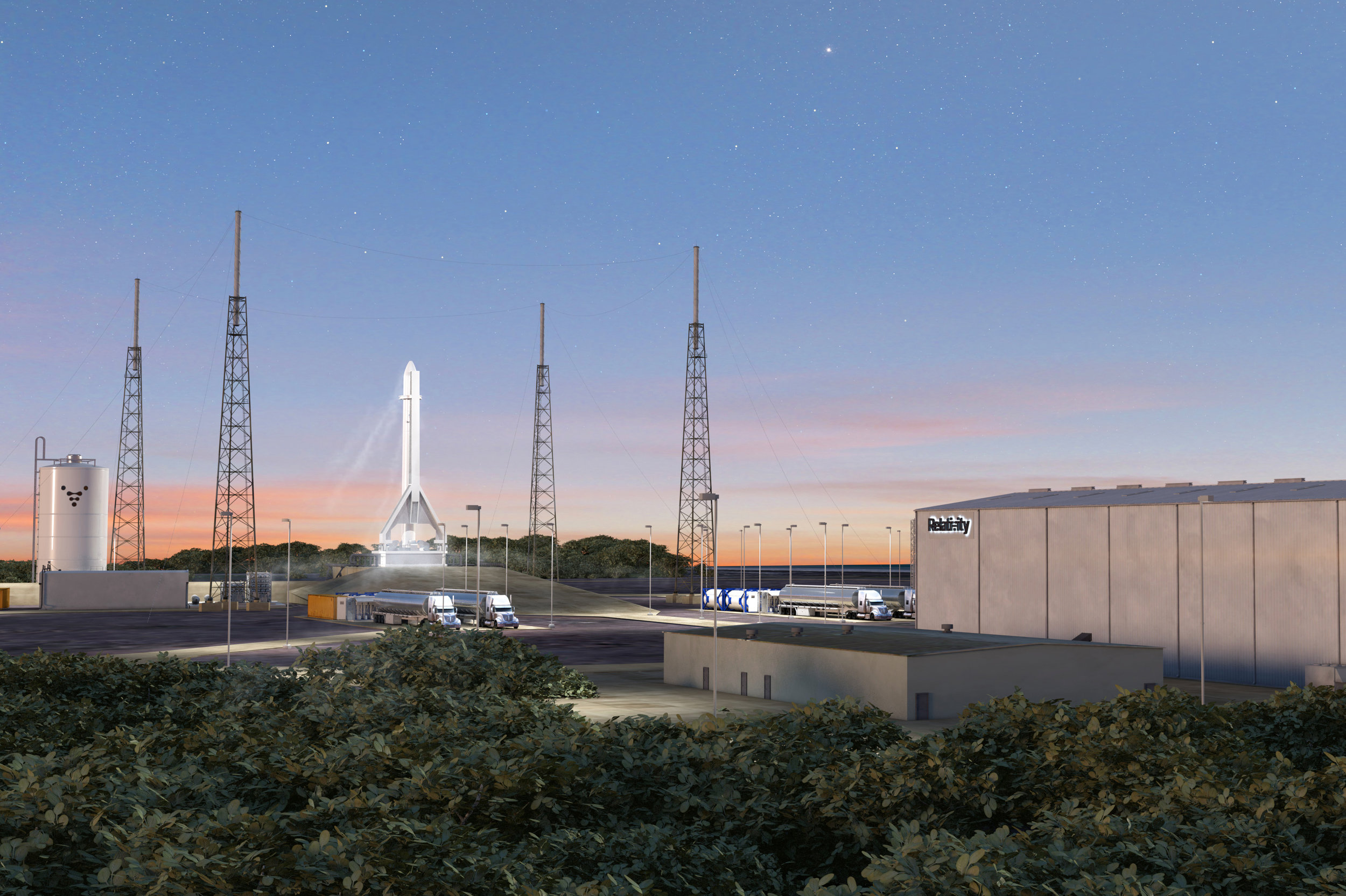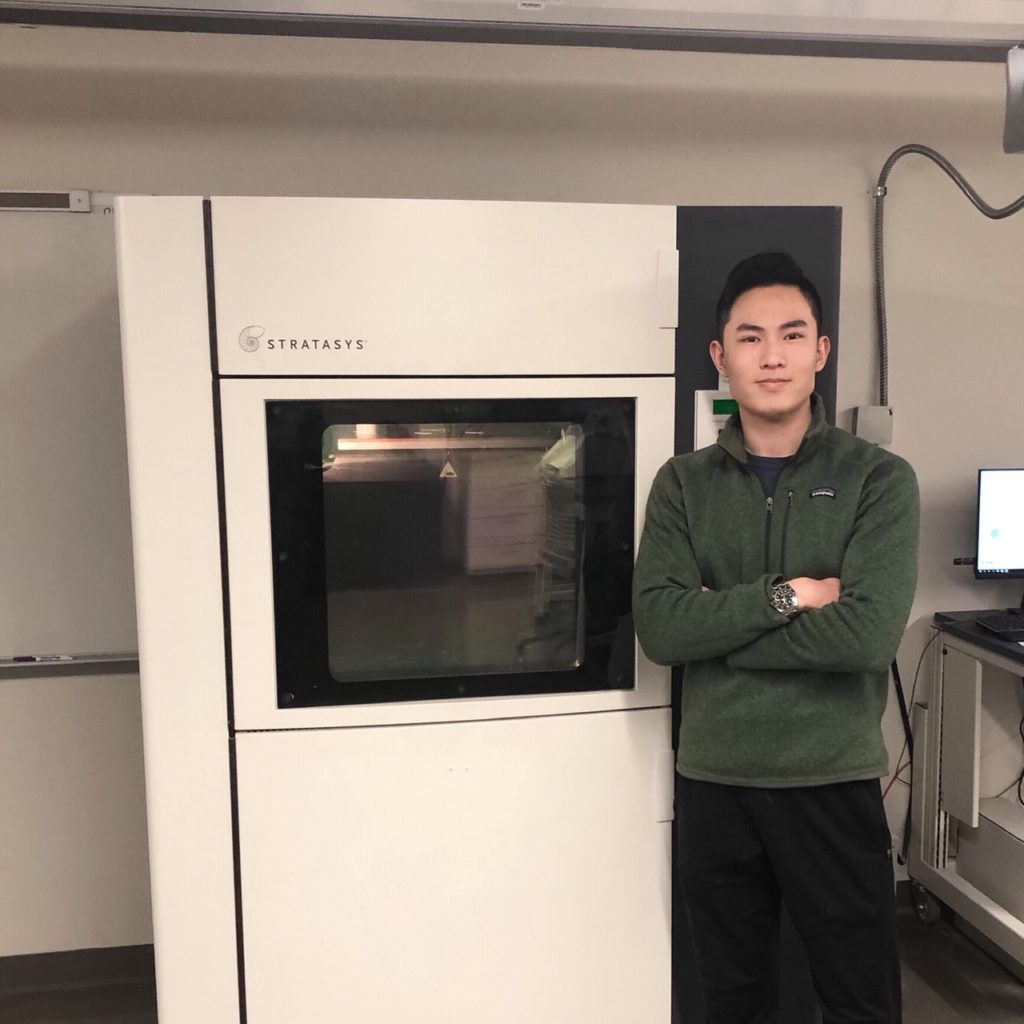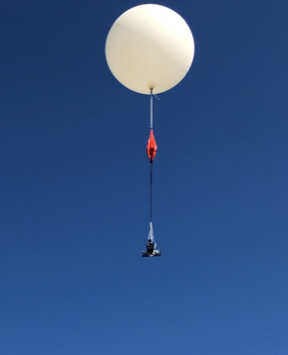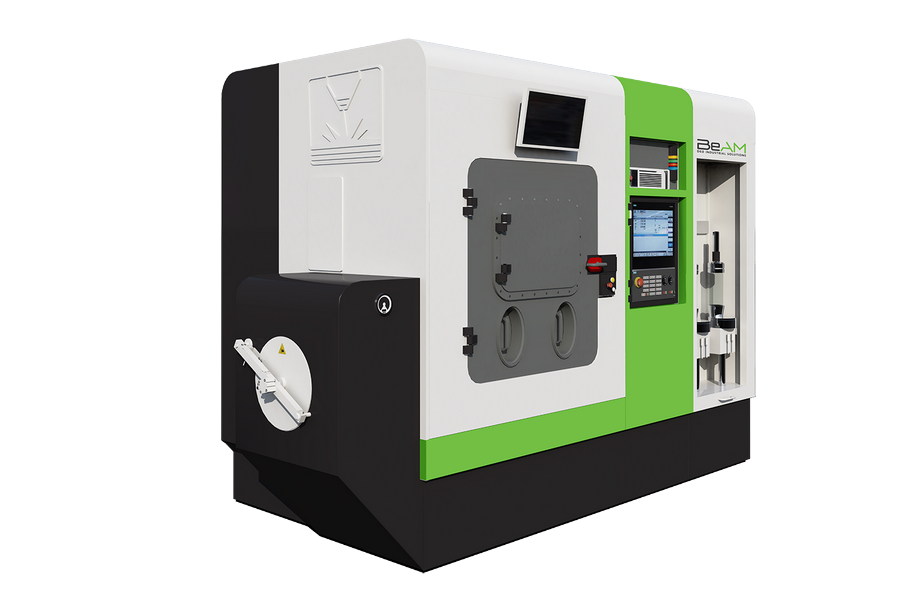After a successful launch on July 30, NASA‘s Mars 2020 Perseverance rover mission is on its way to the Red Planet to search for signs of ancient life and collect rock samples to send back to Earth. Nearly a decade in the making, the 10-foot-long rover packs some breakthrough technology, loaded with scientific instruments and advanced computational capabilities for landing and surviving the frigid Martian nights. Unlike its four predecessors, this is the largest, heaviest robotic Mars rover NASA has built, and space fans are fascinated. The activities and events prior to launch have been virtually packed with people of all ages from all over the world joining for a behind-the-scenes look at the rover, immersive augmented reality virtual trips to Mars, 3D visualizations to explore the science instruments for the mission, and even the chance to 3D print a full-size replica of the Perseverance.
The engineers that built the rover at NASA’s Jet Propulsion Laboratory (JPL) have released free print-ready STL files and assembly directions, found here, to make your own mini, simplified Perseverance. This is the latest addition to the 110 3D printable models that NASA has already made available to the public, which includes a variety of space-related models, from Saturn rockets and International Space Station tools to the Orion capsule and even landing sites for many of the Apollo missions. To make one mini rover, users will have to 3D print 39 parts, many of them more than once, to then assemble several components. All of the sub-assemblies are represented, including mobility and robotic arms, chassis, wheels, and the radioisotope thermoelectric generator (RTG).
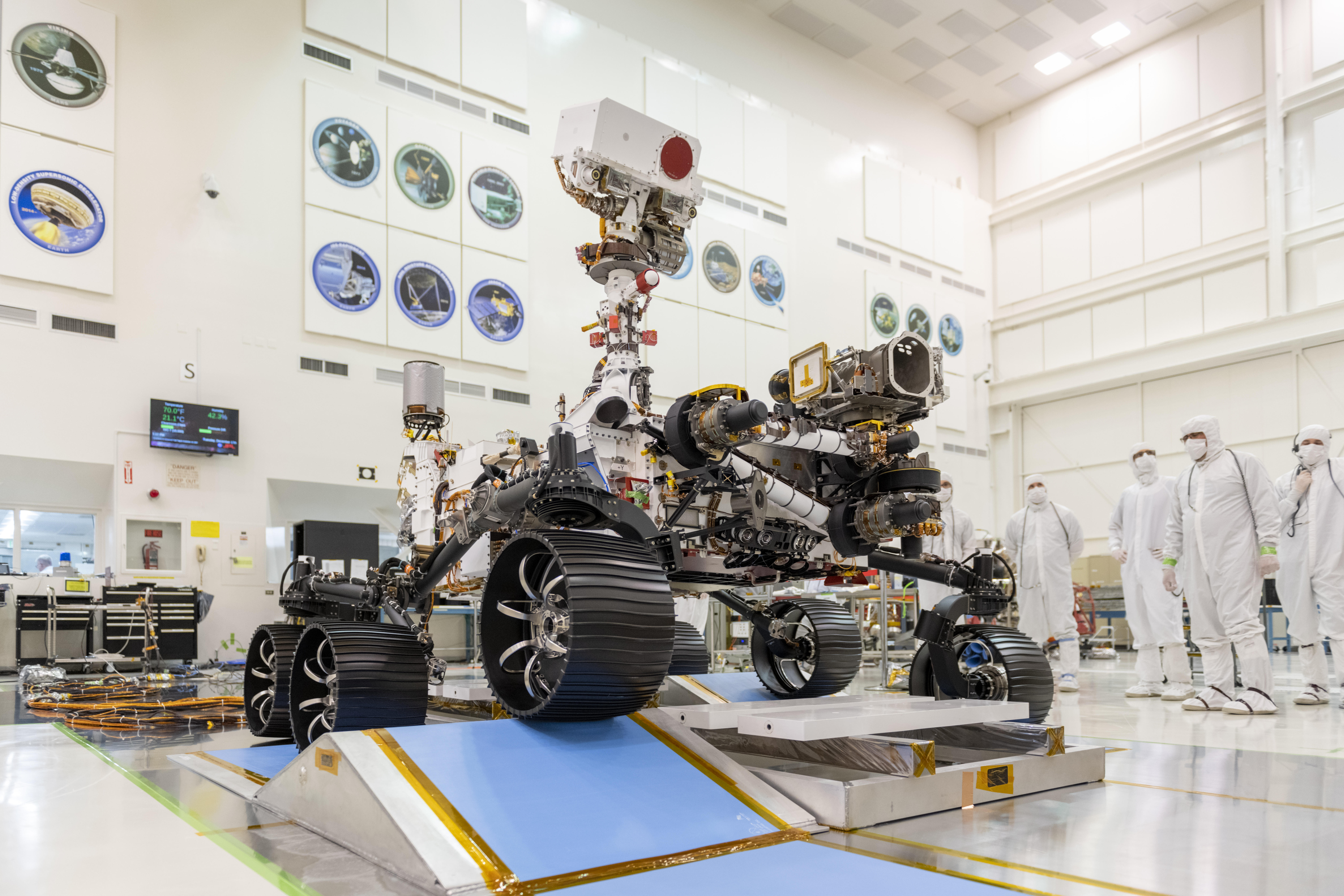
Mars 2020 Perseverance ATLO Rover Drive Test (Image courtesy of NASA/J. Krohn)
Nearly a decade in the making, the real Mars 2020 mission rover weighs more than a ton and hosts seven scientific payloads, a robotic arm, the Ingenuity Mars Helicopter (which can also be downloaded as STL files for 3D printing), 25 cameras, and the first microphones to record sound on the Red Planet. Some of the major hardware in the car-sized Mars explorer, such as the cruise stage, descent stage, backshell, and heat shield were built upon the success of NASA’s Curiosity rover—part of the Mars Science Laboratory mission—and thereby includes many heritage components.
The nuclear-powered Mars explorer will become NASA’s ninth mission to land on Mars and the first since the Viking landers of the 1970s charged with seeking evidence of life. Prior to landing on Jezero Crater, a giant impact basin just north of the Martian equator, the rover will travel 290 million miles over seven cold, dark, unforgiving months aboard the United Launch Alliance (ULA) Atlas V rocket that launched from the Cape Canaveral Air Force Station in Florida.
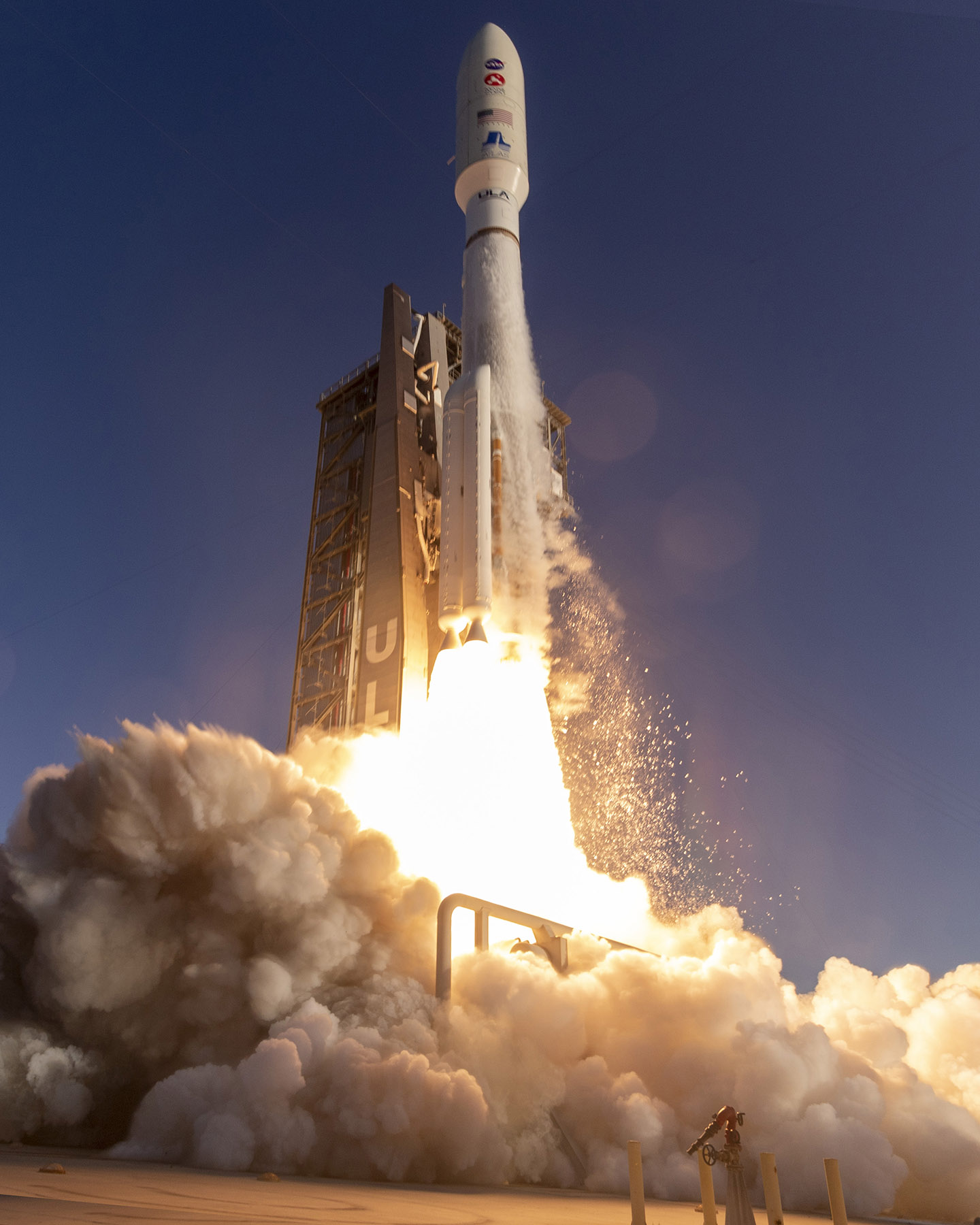
A United Launch Alliance (ULA) Atlas V rocket carrying the Mars 2020 mission with the Perseverance rover lifts off from Space Launch Complex-41 (Image courtesy of United Launch Alliance)
2020 has turned out to be a very busy year space-wise, with dozens of missions going to orbit, the Moon, and Mars. In fact, Perseverence will be joined by two other interplanetary missions to the Red Planet: the United Arab Emirates’ Hope orbiter which launched on July 14 and will study the planet’s atmosphere and climate from above, and China’s first-ever fully homegrown robotic spacecraft, the Tianwen-1. All missions are currently on route and expected to arrive in February 2021.
“With the launch of Perseverance, we begin another historic mission of exploration,” said NASA Administrator Jim Bridenstine. “This amazing explorer’s journey has already required the very best from all of us to get it to launch through these challenging times. Now we can look forward to its incredible science and to bringing samples of Mars home even as we advance human missions to the Red Planet. As a mission, as an agency, and as a country, we will persevere.”
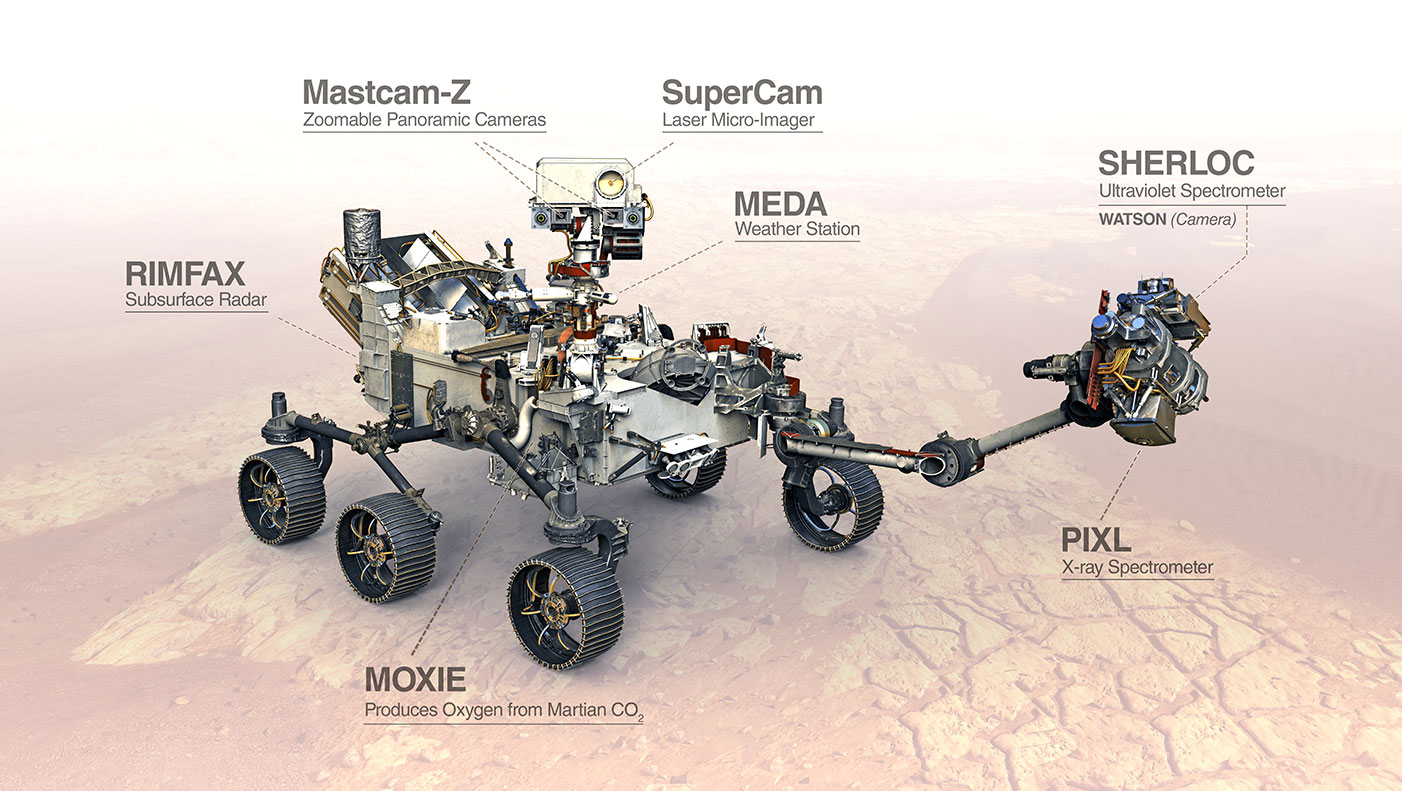
The Perseverance rover carries seven instruments to conduct its science and exploration technology investigations (Image courtesy of NASA/JPL-Caltech)
As part of America’s larger Moon to Mars exploration approach, the Mars 2020 Perseverance mission is to prepare for future human exploration of the Red Planet. The Martian rock and dust Perseverance’s Sample Caching System collects could answer fundamental questions about the potential for life beyond Earth. Two future missions currently under consideration by NASA, in collaboration with the European Space Agency (ESA), will work together to get the samples to an orbiter for return to Earth to undergo in-depth analysis by scientists using equipment far too large to send to the Red Planet.
The Perseverance rover’s astrobiology mission is to seek out signs of past microscopic life on Mars, explore the diverse geology of its landing site, and demonstrate key technologies that will help future robotic and human exploration. According to NASA, while most of Perseverance’s seven instruments are geared toward learning more about the planet’s geology and astrobiology, the MOXIE (Mars Oxygen In-Situ Resource Utilization Experiment) instrument’s job is focused on missions yet to come. Designed to demonstrate that converting Martian carbon dioxide into oxygen is possible, it could lead to future versions of MOXIE technology that become staples on Mars missions, providing oxygen for rocket fuel and breathable air.
“Jezero Crater is the perfect place to search for signs of ancient life,” said Thomas Zurbuchen, associate administrator for NASA’s Science Mission Directorate at the agency’s headquarters in Washington. “Perseverance is going to make discoveries that cause us to rethink our questions about what Mars was like and how we understand it today. As our instruments investigate rocks along an ancient lake bottom and select samples to return to Earth, we may very well be reaching back in time to get the information scientists need to say that life has existed elsewhere in the universe.”
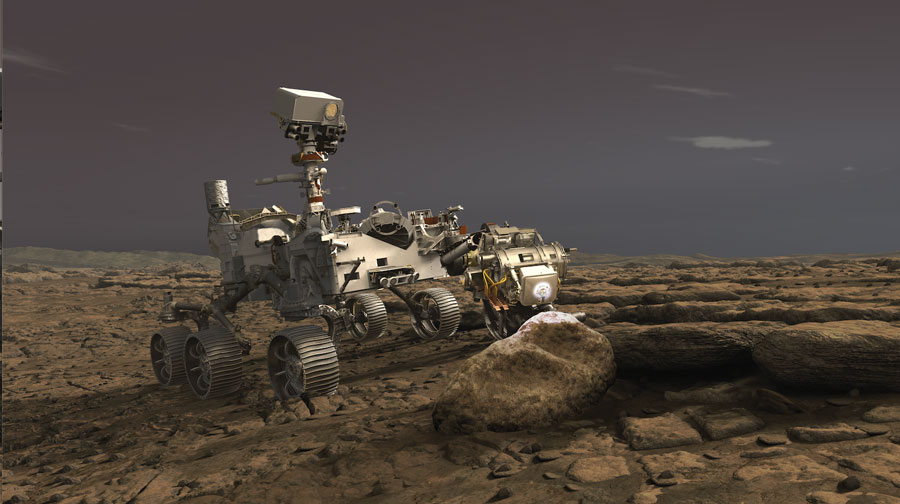
Illustration NASA’s Perseverance rover uses its Planetary Instrument for X-ray Lithochemistry (PIXL) instrument to analyze a rock on the surface of Mars (Image courtesy of NASA/JPL-Caltech)
Deep space exploration remains one of the most appealing undertakings of humanity. Rovers like the Perseverance, and the others before it, engage the curiosity of thousands of people. Today, 3D printing can help recreate these unique explorers at home and has proven to be a great mechanism to engage students and educators in space-related activities, giving them new tools to understand faraway terrains, spacecraft engineering, and technology. Thanks to NASA’s JPL learning space, anyone can explore the world and beyond through projects, toolkits, and many real-life models that give people the chance to touch, feel, and interact with advanced space technology like never before.
The post NASA Lets You 3D Print Your Own Mars Perseverance Rover appeared first on 3DPrint.com | The Voice of 3D Printing / Additive Manufacturing.
 Each Friday is PiDay here at Adafruit! Be sure to check out our posts, tutorials and new Raspberry Pi related products. Adafruit has the largest and best selection of Raspberry Pi accessories and all the code & tutorials to get you up and running in no time!
Each Friday is PiDay here at Adafruit! Be sure to check out our posts, tutorials and new Raspberry Pi related products. Adafruit has the largest and best selection of Raspberry Pi accessories and all the code & tutorials to get you up and running in no time!






